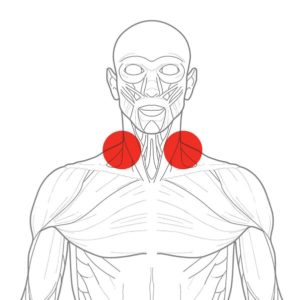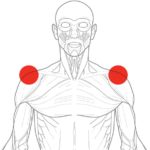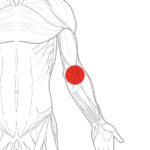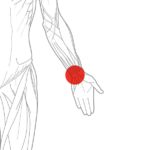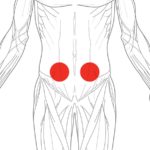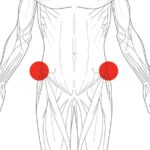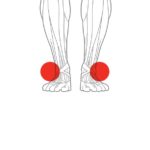Avoiding Common BJJ Knee Injuries
Heather Raftery
What are the most common BJJ knee injuries and how can you prevent them? Read on to discover what they are, how they happen, and what you can do to prevent them.

Avoiding Common BJJ Knee Injuries
If you’ve been training jiu-jitsu long enough, you’ve likely experienced some kind of knee injury. Maybe it was a little tweak, or maybe it was a full-blown… well, blown knee. The thing about jiu-jitsu knee injuries, whether big or small, is that the effects bleed into your everyday life.
Strained your LCL practicing your berimbolo? Not only is your ability to invert basically non-existent until you rehab, but try getting in and out of your office chair. Rolled the wrong way from a heel hook? You may be looking at a severe ACL tear and an impaired ability to walk, much less train. We cannot stress enough: prevention is the cheapest and best option to keep you healthy, on and off the mat.
But what are the most common BJJ knee injuries and how can you prevent them? Among his BJJ practitioner clients, PT Mike Pellegrino regularly sees: ACL sprain or tears, bursitis, and (IT) iliotibial band syndrome. Read on to discover how they happen and how you can prevent them with a few quick and easy BJJ Prehab workouts.
The 3 Most Common BJJ Knee Injuries
1. ACL Sprain or Tear
The Anterior Cruciate Ligament (ACL) is a stabilizing ligament that runs from your femur to your tibia. ACL sprains and tears are one of the most common knee injuries in all sports, and typically occurs when the foot is planted and the knee experiences both a hyperextension and a twisting motion. For example, if you’re avoiding a sweep and you plant your leg and try to turn into your opponent at the same time. In jiu-jitsu, ACL knee injuries can also occur from tapping too late to a heel hook, trying to twist out of a deep knee bar, a hip toss, or uchi mata attempt.
2. Bursitis
The bursae are fluid-filled sacs located between various tissues of the body, including bone, muscles, tendons and skin. There are more than 150 bursae located throughout the body, particularly around the major joints of the shoulder, elbow, hip and knee. Bursitis is when these sacs become inflamed or irritated, swelling and becoming painful to the touch. Bursitis is among the most common BJJ knee injuries. It will occur from repetitive movement – becoming a possible and unwelcome side effect to drilling – or direct impact to the area, such as might happen when you fall to your elbow or knees during training.
3. Iliotibial Band Syndrome
Your IT band is a major tendon that runs from the top of the pelvis, along the outer thigh, connecting to the tibia. It plays an important role in stabilizing the lateral (outside) of the knee as it bends and extends. IT Band Syndrome typically occurs from overuse, and includes pain or tenderness around the outside of the knee, sometimes accompanied by swelling. A common ailment for runners and cyclists, jiu-jitsu practitioners are also prone to IT Band Syndrome. Feeling a bit of knee pain after drilling your knee slice the past week? Or maybe you’ve been working on leg lasso sweep? The repetitive bending and flexing movements found throughout jiu-jitsu training are likely the source of your IT Band Syndrome.
How to Prevent BJJ Knee Injuries
While accidents happen, and are sometimes unavoidable, the chances of getting an ACL sprain or tear are greatly increased if you have weak quadriceps and hamstrings, which help to protect the ligaments of the knee. In fact, due to their often less robust leg muscles, women tend to have a higher incidence of ACL injuries. Likewise, the repetitive movement that causes bursitis and IT Band Syndrome are also unavoidable – especially for avid jiu-jitsu practitioners who just can’t stay off the mat – stronger, more limber supporting muscles can help to protect the joints and alleviate the stress caused by repetitive motion, and even impact.
Mike suggests the following BJJ Prehab exercises to strengthen the muscles supporting the knees and hips, and help reduce your risk of preventable injury. It’s worth noting that if you already have a strength and conditioning regimen, you may not be targeting the specific muscles that support your knee joints and will help prevent a jiu-jitsu related knee injury. Additionally, you will need some equipment for these movements.
1. Single Leg Squat
While standing, lift one leg off the ground and lower your hips down into a squatting position, with about a 90-degree bend in the knee, keeping your weight in your heels and trying to maintain your balance as best as possible. Then straighten back up. Stretching your arms in front of you can help counter your weight if you feel off-balance and if needed, you can place a chair behind you as a guide, or if feel you might fall back during the movement. Continue this motion for 15 seconds, then repeat on the other leg.
2. Step-Ups
Begin by facing a chair (or if you’re at your gym or academy, a box or elevated surface that’s about knee-height). Step one leg up, foot flat on the chair, then lift yourself straight up to meet your feet together. Then lower yourself back down to the floor, keeping the same foot on the chair or box. Repeat this motion, slow and controlled, for 15 seconds, then switch legs.
3. Squats with Band
Take your band and step into it, pulling it to just above both knees. With feet placed about shoulder width distance apart and your arms outstretched in front of you, lower your hips to about 90 degrees, keeping your weight in your heels, then straighten back up completely. Focus on keeping your knees away from each other so that there’s tension on the band throughout the movement. Keep moving in a steady pace for 30 seconds.
4. Single Leg Bridge
Lie down on your back, with your arms down along your sides, palms facing down. Bend one leg, foot flat on the floor, and extend the other leg out and lifted off the ground. Lift the toes of your planted foot off the floor and drive into your heel, elevating your hips off the floor, keeping your core tight and bridging as high as you comfortably can. Then lower back down, keeping your extended leg off the floor. Keep a slow, steady pace for 15 seconds, then switch legs.
5. Single Leg Deadlift
While standing, shift your weight into one foot and hinge at the waist, bending forward to reach both hands to the floor and elevating your other leg into the air behind as high as you comfortably can. Keep both knees bent slightly, and your back neutral. Repeat this motion for 15 seconds, maintaining a slow and steady pace, then switch legs.
Conclusion
The saying that “an ounce of prevention is worth a pound of cure” is so true when it comes to BJJ injuries and training. Check out the full BJJ Prehab program to learn more exercises that will help you stay healthier and roll longer.
Heather Raftery is an Atos black belt, freelance writer and social scientist (BA in Journalism and Anthropology, MA in International Studies). She has written for FloGrappling, Jiu Jitsu Magazine, Fighters Market and BJJ Prehab.


